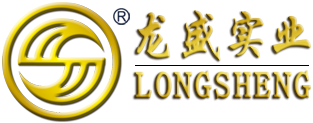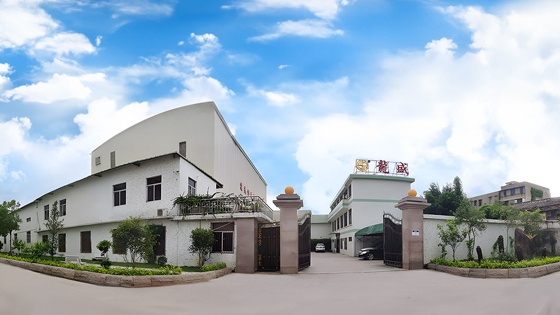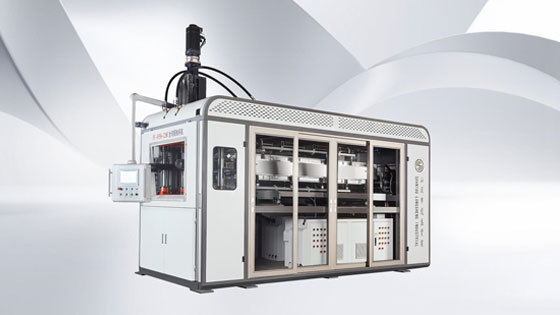Inspection and maintenance of the hydraulic station液压站的检测与维修
Time: 2025-10-13 16:50:48.910
The oil pump motor is not turned on, but the pressure gauge shows that there is pressure. Explanation:
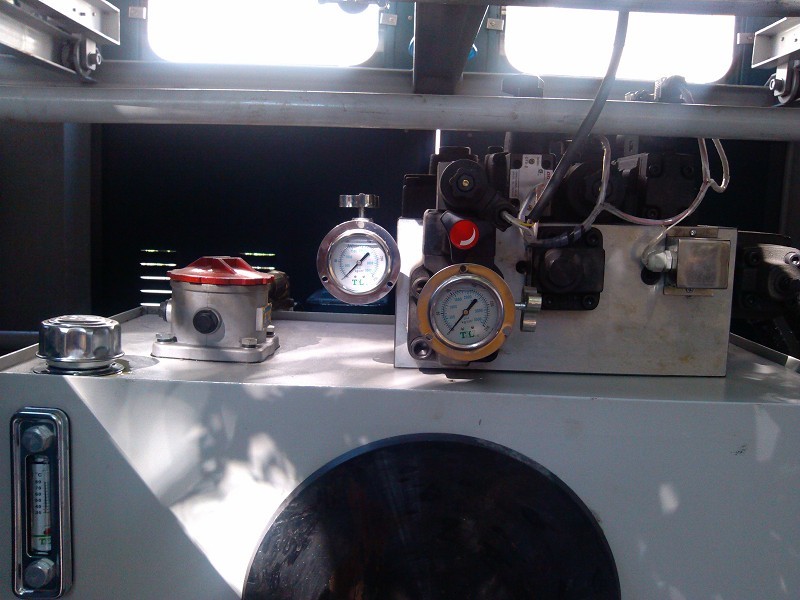
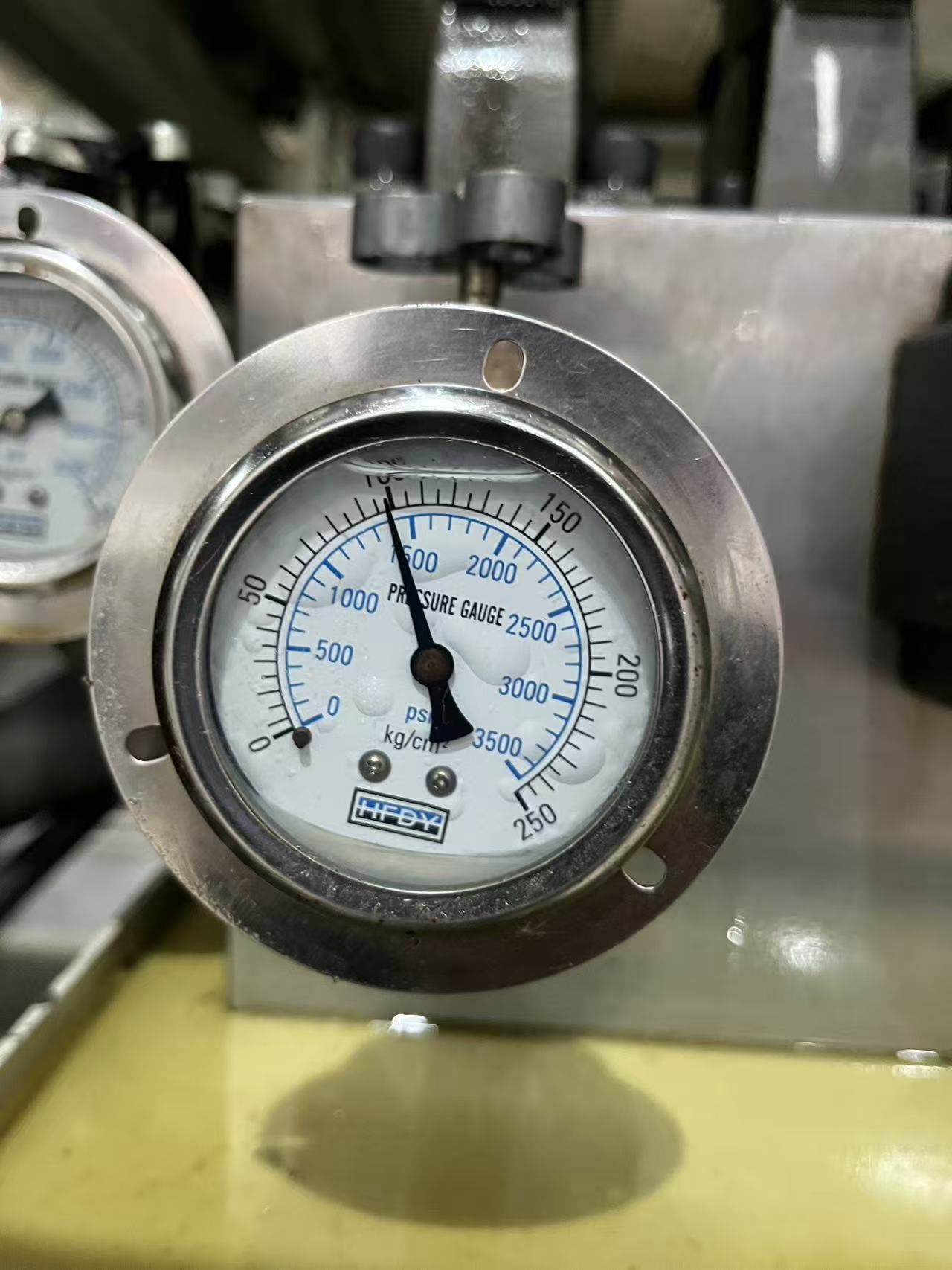
1. There is residual pressure in the system that cannot be released.
2. This pressure might be "trapped" between the pressure gauge and a closed valve at the pressure measurement point.
3. This also proves that the pressure gauge itself is likely to be in good condition.
"Once the oil pump motor is turned on, the pressure display shows no pressure." Explanation:
1. After the oil pump is activated, instead of creating a new pressure, it might even release the previously remaining "trapped" pressure.
2. The oil liquid coming out of the oil pump did not encounter sufficient resistance to establish pressure; instead, it simply flowed back into the oil tank.
The most likely reasons (ranked by likelihood)
1. Incorrect pump rotation (most common)
· Cause: The power phase sequence of the motor is reversed, causing the pump to rotate in the opposite direction.
· Symptoms: The pump rotating in the opposite direction cannot suck or pressurize oil. Instead, it will form an "air pocket" at the suction port and stir the air or a small amount of oil in the pump chamber, resulting in the suction pipe not being able to suck in oil and the pump outlet having no pressure naturally. At the same time, the rotation of the pump may disturb the system, causing the residual pressure to be released.
· Diagnostic method: Listen to the sound. The pump rotating in the opposite direction usually makes a loud noise, accompanied by a sharp whistling sound, and it is the noise of idle rotation. Check the rotation direction mark on the pump housing to confirm whether the motor rotation direction is correct.
2. Overflow valve failure (very common)
· Cause: The overflow valve is a safety pressure control element of the system. If its valve core is stuck in the open position, or the pressure regulating spring is broken/uninstalled, or the damping hole of the pilot valve is blocked causing the pilot valve to remain open all the time, then it becomes a constantly open channel.
· Symptoms: The oil pumped out by the oil pump flows directly back to the oil tank through the overflow valve, and the system cannot establish any pressure. At the moment of starting the machine, the residual pressure will also be rapidly released through this open overflow valve.
3. Severe damage to the pump or oil suction problems
· Causes:
· Severe wear or damage to the pump: The internal clearance is too large, preventing effective sealing and suction pressure from being formed.
· Severe leakage in the oil suction pipeline: The oil suction port connector is loose or the sealing ring is damaged, causing the pump to suck in a large amount of air when suctioning, resulting in "air erosion" and inability to pump out pressurized oil.
· Low oil level in the oil tank or severe blockage of the oil suction filter, leading to pump suction failure.
· Symptoms: The pump operates with loud noise and intense vibration, and the outlet has no pressure.
4. The system has a relief valve and is in the relief state
· Causes: Some systems have dedicated relief valves, or the relief valve is controlled by an electromagnetic valve to be released. If the circuit of this relief valve or the valve core is faulty, it remains in the relief position, having the same effect as a stuck relief valve.
· Symptoms: Similar to the failure of the relief valve, the oil flows directly back to the oil tank.
5. Connection issue between the motor and the pump
· Cause: The coupling is damaged or the key has been cut, resulting in the motor running idle while the pump does not rotate at all.
· Symptoms: The motor operates normally in terms of sound, but the pump makes no sound and does not produce any output.
Core component inspection
1. Check the relief valve:
· Try to adjust the handwheel of the relief valve and turn it clockwise (to increase pressure) to see if there is any change in pressure. If there is no response, the possibility of the relief valve malfunction is very high.
· If conditions permit, you can disassemble the relief valve to check if the valve core is stuck, if the spring is intact, and clean all the parts.
2. Check the status of the pump:
· After confirming the correct motor rotation direction, listen to the sound of the pump operation. A normal pump produces a smooth and low-pitched sound. If there is a violent "clattering" sound or a screeching noise, it may be cavitation or pump damage.
· Touch the pump body with your hand to feel if there is a normal temperature rise and slight vibration. If the pump body shows no response, it may be that the coupling is broken.
· Loosen the connection at the pump outlet (operate after power-off and depressurization!). Manually rotate the motor and see if any oil flows out. If there is no oil flow or only a little oil flows out, it indicates that the pump is not supplying oil, and the problem lies in the pump or the suction pipeline.
Step 4: Systematic investigation
· If none of the above steps can solve the problem, it is necessary to check whether there are any other faults in the system such as malfunctioning relief valves or pressure relays.
· Consider whether it is caused by severe leakage inside the actuating element (such as an oil cylinder), but in such cases, the pressure is usually quite low rather than completely absent.
油泵电机没开,压力表显示有压力” 说明:
1. 系统中有残余压力无法释放。
2. 这个压力可能是被“困在”了压力表所在的测压点与某个关断的阀门之间。
3. 这也证明了压力表本身大概率是好的。
“一开油泵电机,压力变显示没压力” 说明:
1. 油泵启动后,不但没有建立起新的压力,反而可能将之前残余的“困住”的压力泄放掉了。
2. 油泵出来的油液没有遇到足够的阻力来建立压力,而是直接流回了油箱。
最可能的原因(按可能性排序)
1. 泵的转向错误(最常见)
· 原因:电机电源相序接反,导致泵反向旋转。
· 现象:反向旋转的泵不仅不能吸油和压油,反而会在吸油口形成“气塞”,并将泵腔内的空气或少量油液搅动,导致吸油管吸不进油,泵出口自然没有压力。同时,泵的转动可能会扰动系统,使残余压力卸掉。
· 判断方法:听声音。反向旋转的泵通常噪音很大、伴有尖锐的啸叫声,而且是空转的噪音。检查泵壳上的转向标识,确认电机转向是否正确。
2. 溢流阀故障(非常常见)
· 原因:溢流阀是系统的安全压力控制元件。如果它的阀芯被卡死在开启位置,或者调压弹簧断裂/未安装,或者先导阀的阻尼孔堵塞导致先导阀一直开启,那么它就变成了一个常开的通道。
· 现象:油泵打出的油液直接通过溢流阀流回油箱,系统无法建立任何压力。在开机瞬间,残余压力也会通过这个敞开的溢流阀迅速卸掉。
3. 泵本身严重损坏或吸油问题
· 原因:
· 泵严重磨损或损坏:内部间隙过大,完全无法形成有效的密封和吸压。
· 吸油管路严重泄漏:吸油口接头松动或密封圈损坏,导致泵在吸油时吸入大量空气,产生“气蚀”,无法打出有压力的油。
· 油箱油位过低或吸油过滤器严重堵塞,导致泵吸空。
· 现象:泵运行时噪音大、振动剧烈,出口无压力。
4. 系统存在卸荷阀且处于卸荷状态
· 原因:某些系统有专门的卸荷阀,或通过电磁阀控制溢流阀卸荷。如果这个卸荷阀的电路或阀芯故障,始终处于卸荷位置,效果和溢流阀卡死一样。
· 现象:与溢流阀故障类似,油液直接回油箱。
5. 电机与泵的连接问题
· 原因:联轴器损坏或键被剪断,导致电机空转,泵根本不转。
· 现象:电机声音正常,但泵没有任何声音和输出。
核心元件检查
1. 检查溢流阀:
· 尝试调节溢流阀的手轮,顺时针拧紧(增压),看压力是否有变化。如果毫无反应,则溢流阀故障的可能性极大。
· 如果条件允许,可以拆开溢流阀检查阀芯是否卡死、弹簧是否完好,并清洗所有零件。
2. 检查泵的状态:
· 在确认电机转向正确后,听泵运行的声音。正常的泵声音平稳低沉。如果有剧烈的“嘎嘎”声或尖叫,可能是气蚀或泵损坏。
· 用手触摸泵体,感觉是否有正常的温升和轻微振动。如果泵体毫无反应,可能是联轴器断了。
· 松开泵出口的接头(在断电和卸压后操作!),点动电机,看是否有油液喷出。如果没有或只有很少油流出,说明泵没有供油,问题在泵或吸油管路。
第四步:系统性排查
· 如果以上步骤都未能解决问题,需要检查系统中是否有其他卸荷阀、压力继电器等元件故障。
· 考虑是否是执行元件(如油缸)内部串腔等严重泄漏导致,但这种情况通常压力会很低,而不是完全没有。
Related News
Exploring the Advantages of Quality Cup Thermoforming Machines in Plastic Manufacturing
In the realm of plastic manufacturing, a quality cup thermoforming machine stands out as a vital asset for businesses looking to optimize their production processes. Thermoforming is a technique that involves heating a plastic sheet until it becomes pliable and can be molded into various shapes, including cups. The efficiency and precision of these machines make them essential for producing high-q
Customized Plastic Thermoforming Machines: Enhancing Product Versatility
Customized Plastic Thermoforming Machines: Enhancing Product Versatility Table of Contents 1. Understanding Thermoforming Technology 2. Benefits of Customized Plastic Thermoforming Machines 3. Types of Thermoforming Machines Available 4. Design Flexibility and Innovation in Thermoforming 5. Cost Efficiency and Productivity Gains 6. Sustainability in Plastics Manufacturing 7. Automat
Contact Us
China Shantou Longsheng Industry Co., Ltd.
Address:No.44 Xigang Road, Shantou, Guangdong, China
Mob: +86-13302710116
Shiela:+86-15362312727
E-mail: longshengmachine@gmail.com


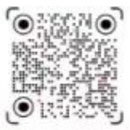
TikTok
